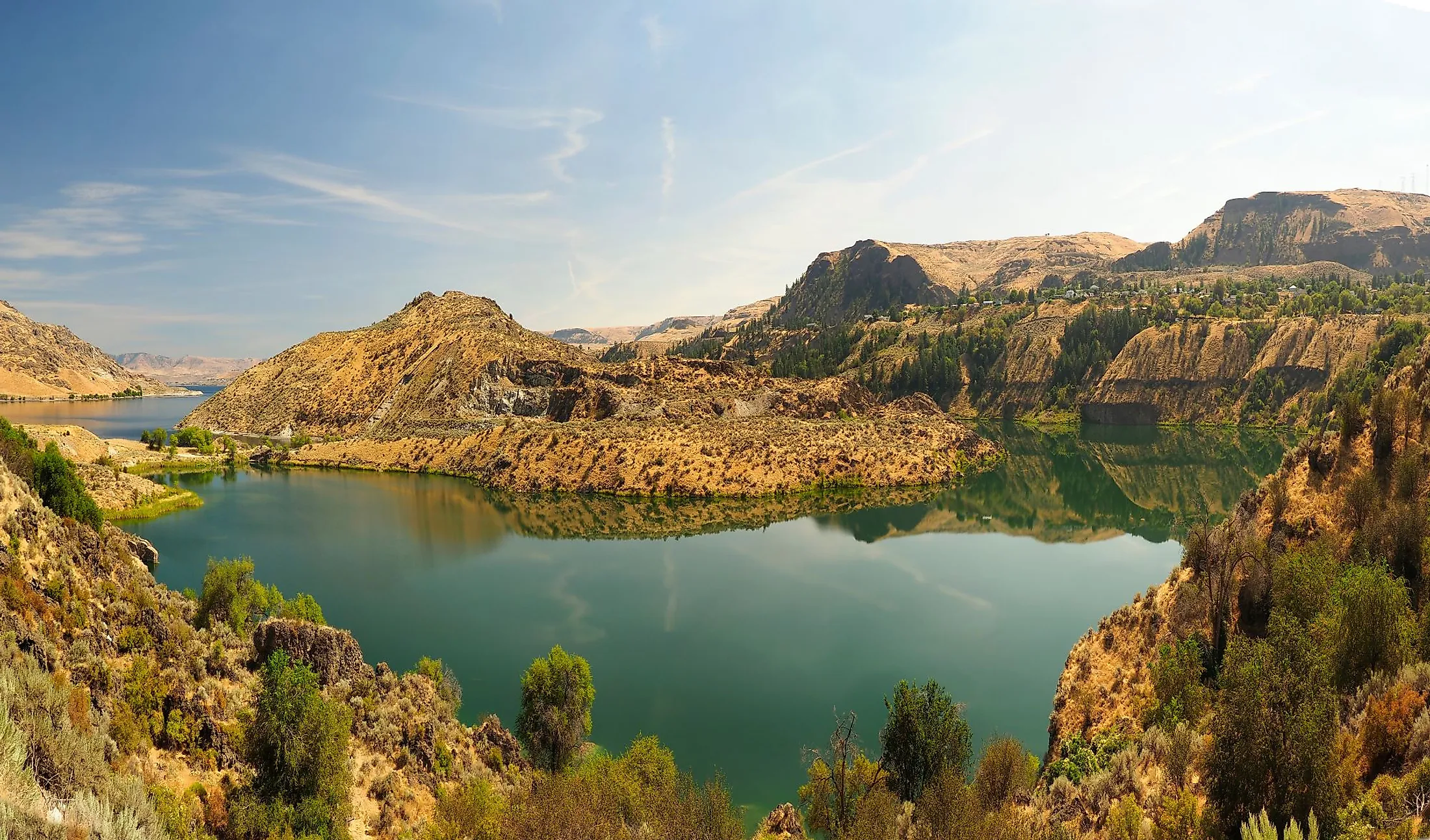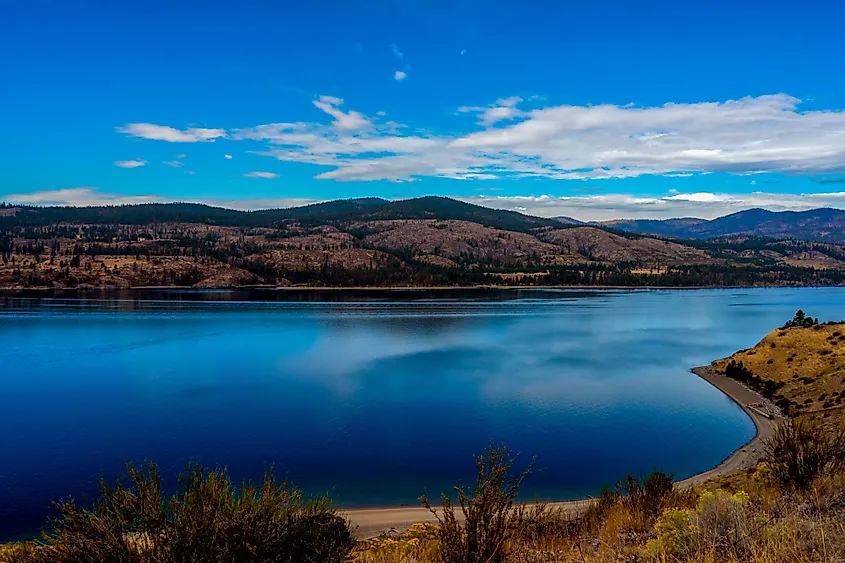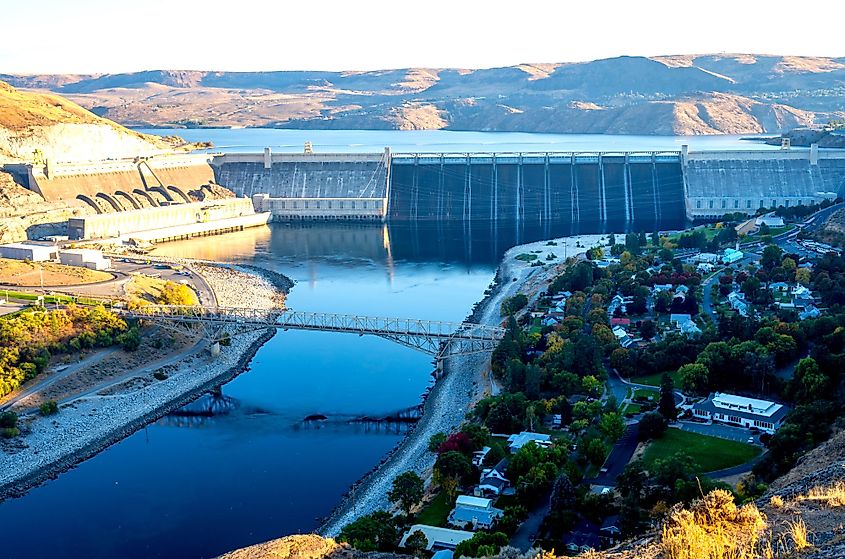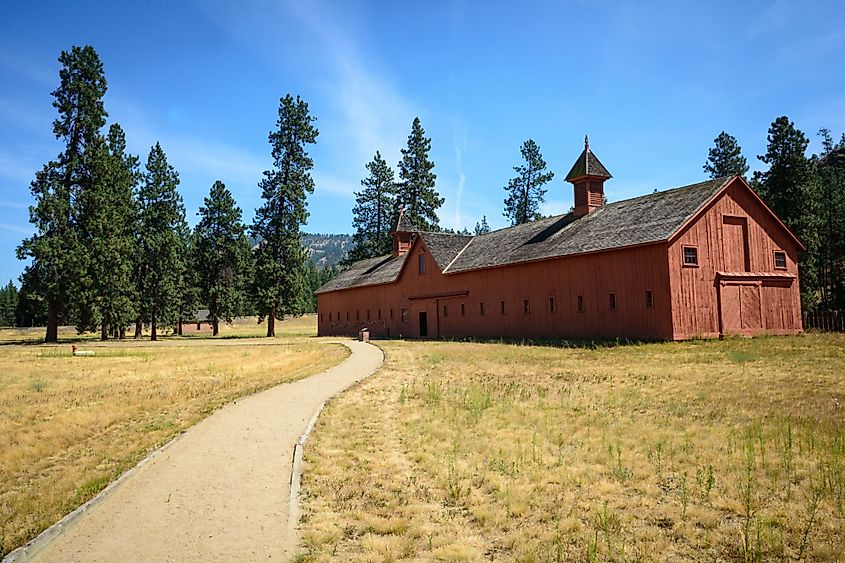
Franklin D. Roosevelt Lake
At face value, Franklin Delano Roosevelt Lake is an all-American getaway with the history and grandeur to support it. Formed through the labor of a 1930s workforce acting in defiance of natural disaster, this dammed-up artificial lake protects the residents of Washington State from the unpredictable floods and droughts that used to devastate them. Tragically, this flooding of the Columbia River encroached on ancient Native American cultures, such as burial sites, community gatherings, and fishing traditions. However, monetary compensation and delegation of responsibility to local tribes have eased that loss. The lake is, at present, an ideal destination for wilderness enthusiasts and hordes of casual vacationers, which gives the Roosevelt Lake area its sparkling personality.
Geography And Climate Of Franklin D. Roosevelt Lake

Unapologetically lanky in its shape, Franklin D. Roosevelt Lake appears to be a large winding river at first glance. The sheer size of the lake is hidden by its meandering appearance; in truth, it is both the largest lake and reservoir in the entire state. The numbers speak for themselves; the lake covers 80,000 acres and extends for over 240 km from the US-Canada boundary to the Grand Coulee Dam. The lake also has a 970 km long shoreline and holds a total capacity of 12 cubic kilometers, with 6 cubic kilometers for controlling floods.
Depending on weather conditions, the lake's water level fluctuates, with an increase of about 7.6 m during heavy downpours to reducing to about 3.0 m during dry seasons. During January or February, the lake reaches its maximum depth, remaining full till April and May and dropping in mid-June with the end of the irrigation season. Franklin D. Roosevelt Lake receives its primary inflows from the Columbia River, Spokane River, and San Poil River. Besides supplying water for the Grand Coulee Dam, the lake also supports the Lake Roosevelt National Recreation Area.
History Of Franklin D. Roosevelt Lake

Although the lake was built in the same period that the Civilian Conservation Corps were refreshing the American outdoors, Franklin D. Roosevelt Lake is the result of a different project focused on addressing the Great Depression. Unemployment rates were skyrocketing in the early 1930s, so massive industrial efforts not only provided labor with a source of income but also ensured Americans that the resources of North America were being given an efficient purpose. Droughts and flooding devastated the United States, so President Roosevelt decided that strategic dam placements along the Columbia River would accomplish three goals in one swing; aid the economy, manage floods, and create a reservoir.
First called the Columbia Reservoir upon completion in 1933, the lake was renamed after the President when he passed away in 1945. Furthermore, the surrounding park was called the Coulee Dam Recreational Area until it was also named after President Roosevelt in 1997. This surrounding area and management of the lake are the result of an agreement with several indigenous American tribes. Their pride in this ancestral and spiritual homeland took shape during a dispute with an upstream mineral corporation after a legal escalation in 1994, forcing the company to invest a billion dollars into reducing emissions. Today, the National Park Service maintains this vibrant region, and that service includes campgrounds and visitor centers.
Flora And Fauna Of Franklin D. Roosevelt Lake
Lake stocking has provided fishing enthusiasts with 30 different fish species, including walleye, smallmouth bass, and northern pike. Bird watching is nearly a competitive sport in the Lake Roosevelt area, given the proliferation of Canadian and Snow geese, grebes, and various songbirds. Sonoran Mud turtles are happy to make their home here, as are the ten species of amphibians and 15 species of reptiles. Visitors are encouraged to be wary of the many mammalian creatures prowling the coasts, with over 75 species counted. Bears, foxes, bobcats, mountain lions, deer, and even the adorable (but feisty) javelina are familiar sights in the area.
Towards the north, sweeping groves of Ponderosa Pine and Douglas-fir thrive thanks to high precipitation. The northern stretch of the lake also supports grasslands, alder, willow, hazelnut, and black cottonwood. The southern and western edges interact with an arid climate that hosts prickly pear, lupine, wheatgrass, and hard fescue. The variety of life in and around Lake Roosevelt is an example of how an ecosystem can adapt to even the most radical geographical changes, whether natural or artificial.
Recreation In Franklin D. Roosevelt Lake

Roosevelt Lake is an ideal staging ground for audacious designs found in the Scout Life magazines, as the protected region hosts numerous wilderness hotspots. Swimming is a summer favorite, made all the more accessible by 9 Boat-in campgrounds. Fishing is another popular activity made possible through any of the 22 public boat launches. A common sight on the lake is groups of kayakers and canoers taking in the stunning view of hillsides reflecting over the water surface. Furthermore, hunters are delighted by the diversity of terrain and fauna that populate Lake Roosevelt’s vast territory. Each core wilderness activity benefits from the scale of the lake and its surrounding region, in consideration of the 1.5 million annual visitors.
Several historic locations can be stumbled across while visiting the lake. Noteworthy mentions include structures from the 1800s such as St. Paul’s Mission and Fort Spokane. The Coulee Dam itself is a testament to the ingenuity of old American engineering, given the many years it has already served and promises to continue serving. Hiking trails are found in abundance around Franklin D. Roosevelt Lake, where every visit reveals somewhere new to explore.
The best features of this earth are the ones that are both hard to find and rarely mentioned. Each state in the United States has its own closely guarded secrets, and in Washington’s case, it is Franklin D. Roosevelt Lake. Stuffed with outdoor havens and a fascinating geologic history, the lake provides a fundamental service to all citizens who live in the vicinity. After all, having a stockpile of water as well as a guard against unpredictable flooding can be the difference between life and death for settlers of the Pacific Northwest.











